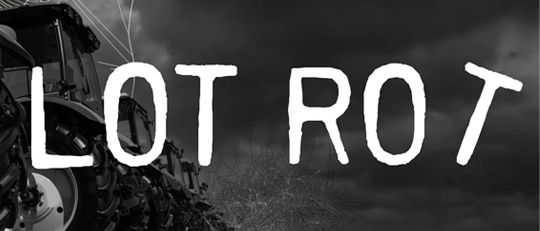Articles

Data-Driven Solutions for Modern Ag Dealers Webinar
In this webinar Matthew Cox, Chief Data Officer at Fusable, will reveal strategies and solutions to help dealerships tackle the toughest challenges in moving equipment and driving sales. With actionable

The Benefits of Programmatic Advertising with Better Data
Digital advertising is a cornerstone of a successful digital marketing strategy. But how you execute the strategy can impact the performance of your campaign and the overall momentum of your business. That’s because not all digital advertising strategies are built the same, and some are much less effective and efficient than others. Thankfully, there are ways to strengthen and automate your advertising efforts to improve their results.

Everything You Need To Know About Data-Driven Marketing for B2B
Data-driven marketing is essential for successful campaigns, especially for B2B. It encompasses various strategies and tactics that can significantly improve lead generation and conversion rates. But applying these methods effectively

Why Invest in Content Marketing for B2B? The Definitive Guide
The internet is currently flooded with content from brands and businesses touching on every subject conceivable. So, if you’re just starting a content marketing campaign, it can feel daunting to stand out from the crowd and grab your audience’s attention. That’s why it’s helpful to better understand why content marketing is worth it for your business and the best way to develop your content marketing strategy.

Weathering Auction Market Fluctuations: How to Anticipate Changes in Heavy Equipment Values
In a recent EquipmentWorld article by Jordanne Waldschmidt, it was reported that auction prices for used units are trending downward, as more construction equipment and truck inventory are now available on dealer

Making Profitability Certain in a Year of Uncertainty
“Most insureds, regardless of industry or vehicle class, should anticipate ongoing premium increases in 2024,” states CBIZ in their Commercial Auto Insurance Market Outlook for 2024.1 In the realm of

Unleash the Power of Route-Targeting: How to Maximize ROI
In the competitive landscape of truck dealership marketing, attracting non-local fleets can be a significant challenge. Picture this: You’re a dealership looking to expand your customer base beyond your immediate

Uncover Hidden Opportunities with Actionable Data
Do you struggle with the overwhelming amount of data available to you? Imagine having the power to make sense of vast datasets, understand market dynamics, and identify growth opportunities effortlessly.

Avoiding Lot Rot
It’s hard to find something ag dealers fear more than “lot rot”. You’ll also never find a finance manager who’s comfortable watching used inventory depreciate month after month all while

Fighting Truck Depreciation: Getting Used Equipment Off Your Lot
As you might already know, build rates and new equipment sales for tractor trucks are down, and they’re predicted to stay that way for most of 2024. The freight industry

Is Your Dealership Growth Stagnating? Discover the Secret to Revitalizing It!
In the competitive world of trucking dealerships, stagnant growth can be more than a real headache, it could mean real trouble. You might be wondering why your dealership isn’t experiencing

Is Your Sales and Marketing Prepared for the Rise of AI?
As AI and machine learning continues to develop, its influence and effects continue to spread to almost every major industry, including those in the heavy equipment sector, such as trucking, agriculture, and construction. In fact, AI expenditures in the transportation market specifically are said to reach $3.87 billion by 2026. That’s why it’s important to understand how these technologies might affect the industry you operate in and the best way to shape your sales and marketing strategies around them.

Are You Prepared for Threats Against Your Market Share?
With the state of the economy and the after effect of supply chain issues, it’s possible your company might be in danger of losing market share. But that also puts your company in an interesting position to gain market share if you know where to look. That’s why it’s so important to understand the current state of the market and have the tools to quickly and effectively analyze your opportunities and threats.

5 Strategies To Better Align Your Sales and Marketing Teams
If your company’s sales and marketing teams aren’t aligning their efforts and key strategies, you could actually be creating several disadvantages for your business compared to your competitors. That’s why it’s so helpful to be aware of the signs that your teams might be out of alignment and the best way to set them up for success and future collaboration.

The Best Way To Nurture Leads: Using Expert Content
Lead nurturing is the process of cultivating leads that aren’t ready to buy. It’s a strategy that companies use to engage with their leads, build thought leadership, and inform them about their products and services based on what their needs are and how the company can provide them with solutions. Essentially, it allows companies to keep their business and brand top of mind and build strong relationships with their leads before they become customers. But without effective lead nurturing strategies and tactics, like well-executed content marketing, the process can often feel difficult.

7 Tips To Help Your Business Stand Out on Social Media
Social media is an important tool for almost every B2B marketing campaign. But that means almost every business is using it to boost their marketing efforts. So, it’s hard to stand out from the sea of other businesses who have their own social media strategies and marketing campaigns. Luckily, there are a number of ways you can improve your social media marketing campaign and help pair it more effectively with your other digital marketing strategies.

7 Strategies To Boost Your B2B Thought Leadership
Building thought leadership is a cornerstone of content marketing that businesses are using to improve their content marketing efforts and generate demand for their products and services. But showing your audience that your business has its own expert opinions and knowledge is often easier said than done. That’s why it’s helpful to have tried and true strategies to develop your thought leadership and better attract your target audience.

The Key To Performing an Effective Competitive Analysis
Conducting an analysis of your competitors can help you learn more about your target audience, what type of marketing or sales content resonates with them best, and if there are any gaps in your current business strategies. But performing a competitive analysis can be tricky, especially if you’re not sure which information is most important to research and analyze. That’s why it’s helpful to understand what you should include in your analysis report, where to find the information you need, and how to use it to your advantage.



